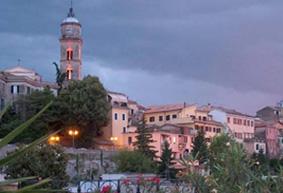


All the structures

Frosinone stands on a hill. You can take a stroll through its historic town centre, which the local people call "the province". The beautiful panoramic view is enlivened in winter by students from the high schools and the Academy of Fine Arts. Modern Frosinone is spread out below, home to the nightlife of bars, pubs, restaurants and ice-cream parlours.
The countryside that surrounds Frosinone is lush and rich in tradition. Many village festivals celebrate the religious traditions of the area. Fiuggi is renowned in the world of tourism for its waters.
Many people define the Ciociaria area as the soul of Lazio. Alatri, Ceprano, Cassino, Veroli, Fumone, Anagni and Patrica are just some of the jewels to visit. Of great historical importance are the towns of Alatri and Ferentino, which developed due to their strategic position. During the 2nd and 1st centuries B.C. the local aristocracy saw to the creation of major shrines and palaces. The most important monuments of these two towns are their acropoli: large terraces on top of the hills. The Acropolis of Alatri still has its walls intact.
At the foot of beautiful Veroli, known as “Little Florence”, visitors can explore the Casamari Abbey. Built by the Cistercians, the Casamari Abbey (1217) is closely connected to the abbeys and monuments of Burgundy where the Cistercian order was founded.
Typical of the Ciociaria area are the “ciocie”, a type of footwear once widespread among the farmers and made from a sole held to the foot by strings wrapped around the ankle. Nowadays the ciocie are only used in village festivals and traditional pageants.
The Frosinone cuisine is simple and true to tradition.
The best-known “Ciociari” dishes are homemade tagliatelle, aniseed doughnuts, wine-flavoured ciambelline biscuits and excellent confectionery.